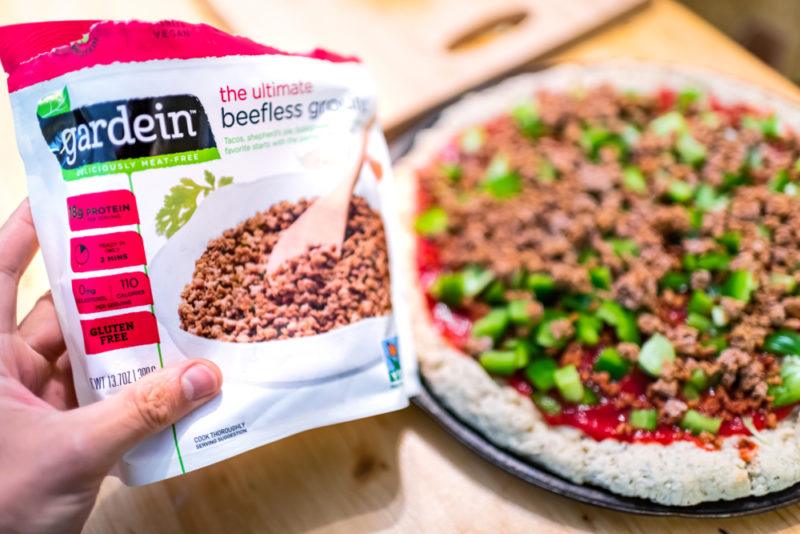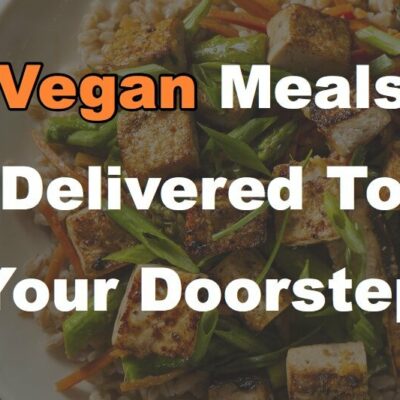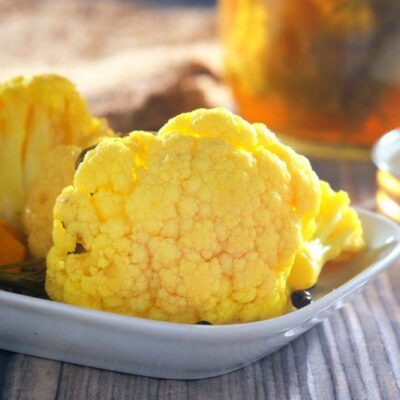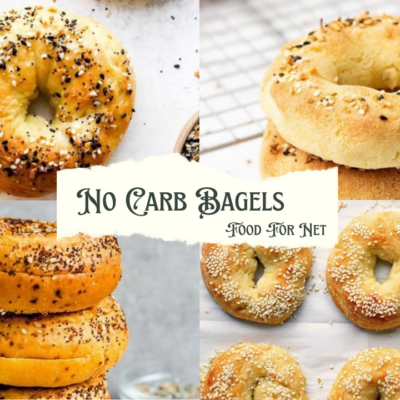
Plant-based diets are a powerful way to improve your health – and what could be better than a vegan diet? You’re cutting out the most controversial foods and focusing on plant-based options instead. Plus, a vegan diet is perfect if you’re concerned about the environment or animal welfare. But, if you want to be healthy, then you need to think about high protein low carb vegan foods.
These foods are crucial because many vegan options are high in carbs. Bread, grains, pasta, rice, pseudograins, and legumes are often carb rich foods. Many processed vegan foods can be surprisingly high in carbs too.
It’s important to talk about the carb content in food, as high carb diets have been linked to many health problems. Many high carb foods are still good for you, but eating an excessive amount isn’t a great plan. Plus, if you’re eating a lot of carbs, you mightn’t be getting enough protein in your diet.
The foods in this list help to resolve both problems at once. Not only are they naturally high in protein, but they’re also low in carbs. Many of them can even be used on a vegan keto diet, which is one of the most restrictive eating plans that there is.
The Best High Protein and Low Carb Vegan Foods
- Nuts
- Nut Butter
- Peanuts
- Chia Seeds
- Hemp Seeds
- Flax Seeds
- Tofu
- Tempeh
- Kale
- Mushrooms
- Protein Powders
- Seitan
- Soybeans
- Lupini Beans
- Nutritional Yeast
- Homemade Meat Substitutes
- Some Vegan Meat Substitutes
Nuts

Nuts are an easy choice for anyone eating vegan or low carb foods. After all, nuts are a decent source of protein and healthy fats, and they don’t contain many carbs.
However, the nutritional profile varies depending on the type of nut. Almonds, cashews, pistachios, pecans, and walnuts are some of your best protein choices. In contrast, cashews and pistachios are both relatively high in carbs.
Brazil nuts and pecans are your lowest carb choices, followed by macadamia nuts, walnuts, peanuts, and hazelnuts.
Because of this, walnuts and pecans are some of your best choices for balancing carbs and protein. Almonds are higher in carbs, but they can still be a good choice, especially if you’re not following a keto diet.
Don’t write Brazil nuts off either. They might not offer as much protein as some of the other nuts, but they still contain a decent amount and are very low in carbs too. Plus, Brazil nuts are an excellent source of selenium.
Nut Butter

Nut butter is an easy alternative to eating nuts on their own. High quality nut butter brands rely on nuts and few other ingredients. So, you’re getting all the nutrients that nuts have to offer, but in an easier-to-use form.
After all, you can use a spoonful of nut butter in a smoothie, spread it on a low carb cracker or a piece of apple, or even just eat it as-is.
Just be careful with your serving size. It’s easy to eat more nut butter than you intend to, especially if you spread it on thickly.
While almond butter is the most well-known option here, you can find butters for most types of nuts (and even some seeds). You’ll need to keep an eye on the carb content here too. In particular, cashew butter might contain too many carbs for your needs.
Peanuts

Peanuts are technically a legume, rather than a type of nut. They often get overlooked too, as they don’t have the same stellar reputation as nuts.
In fact, some people avoid peanuts entirely because they’re legumes. This is a shame because peanuts do have some distinct advantages.
For one thing, peanuts are low in carbs, giving you around 7 grams of net carbs in a 100-gram serving. This is the same amount that you get from walnuts and less than almonds. The protein content is impressive too, as you get more than 25 grams of protein in that same serving size.
Peanuts are also less expensive than most nuts. If your budget is tight, then it’s much easier to eat peanuts regularly than other types of nuts.
This pattern is even more notable for peanut butter. But, you’ll need to choose the brand carefully. Look for peanut butter that just relies on peanuts and perhaps some salt. Avoid any products that contain additives, as these won’t be as good for you.
Chia Seeds

Let’s not forget about seeds. Like nuts, seeds are nutrient powerhouses and some of them are low in carbs too.
Chia seeds are a fantastic example. They just contain 8 net grams of carbs per 100 grams and give you 16 grams of protein in that same serving.
Plus, chia seeds are tiny, with little flavor. Getting them into your diet is as simple as scattering them across a meal or including them in a protein shake.
To be clear, chia seeds are low in net carbs, not total carbs. Their total carb content is high because the seeds are fantastic sources of fiber.
The distinction is important. Most low carb and keto dieters aim to keep net carb intake down, rather than total carbs. This is because net carbs is a measure of the digestible carbs in food. It’s calculated by subtracting the total carb content by the amount of fiber.
After all, it’s the digestible carbs we’re worried about and fiber is critical for your health.
Hemp Seeds

Hemp seeds are the new kid on the block. They’re not as well-known as sunflower seeds or pumpkin seeds and they can be harder to find. But, hemp seeds are also pretty important.
A 30 gram serving of the seeds gives you 10 grams of protein and just 1 net gram of carbs. How’s that for impressive?
The seeds are also thought to be a good source of some of the plant-based compounds from cannabis (the non-psychoactive ones). These compounds could mean that hemp seeds promote your health in more ways than we know.
Flax Seeds

Before we move away from nuts and seeds, let’s spare a moment for flax seeds. These have a few important things going for them. One is that they’re another low carb source of protein. Another is that they contain plenty of nutrients, including B vitamins, zinc, and fiber.
Even more valuable is omega-3 fatty acids in the seeds. Omega-3 fatty acids are the reason that fish is often recommended for your health. These fatty acids have been linked to many benefits. But, you don’t eat fish on a vegan diet, so you need plant-based sources of the fatty acids.
Flax seeds are one of your best options.
If you don’t want to use the whole seeds, try flaxseed meal instead. This simply consists of flax seeds that have been ground to create a powder. This powder can be easily mixed into your meals for a quick boost of protein, fiber, and omega-3 fatty acids.
Tofu

While legumes are a fantastic source of protein, they tend to be high in carbs too, making them a poor choice for low carb dieters. However, there are exceptions and some legume-based products also end up being high protein and low carb choices.
Tofu is one of these.
For firm tofu, you’ll often be getting around 1 net gram of carbs in a 100-gram serving of tofu, along with around 10 grams of protein. Pretty impressive, right?
Tofu’s versatility is another excellent advantage. You can use it to replace meat in countless meals. Tofu will even take on the flavors of your other ingredients, which gives it even more flexibility.
Tempeh

Tempeh is similar to tofu, except that tofu is made from coagulated soy milk, while tempeh is made from fermented soybeans instead. Tempeh tends to be less processed than tofu and it also has a savory nutty flavor that complements many recipes.
The fermentation makes the soybeans easier to digest, so you should get more nutrients from them than you would with many other soybean products.
The protein content varies from product-to-product, but tempeh a 100-gram serving may contain 20 grams of protein. That’s more protein than tofu. Plus, you’re still only looking at around 1 net gram of carbs per serving.
Kale

Here’s an interesting fact – some leafy greens can be a surprisingly good source of protein. Kale is one of these. You get a little over 4 grams of protein in a 100-gram serving.
This might not sound like much at first glance. After all, that same serving size of chia seeds gives you 16 grams of protein, while 100 grams of peanuts contains an impressive 26 grams of protein.
But, the ratio of calories to protein makes kale a powerful choice. Think about it. Nuts work well for protein, but you need to carefully watch your portion size to keep your calorie intake in check. You don’t have that problem with leafy greens.
Kale is also packed with important nutrients and has been linked to health benefits. So, why not get some more in your diet?
Mushrooms

Like kale, mushrooms aren’t well-known for their protein content. Yet, you get a decent amount of protein for the carbs and calories that they contain. In fact, some dried mushrooms contain more than 35 grams of protein per 100 grams (although, in fairness, you’re probably not eating 100 grams of dried mushrooms in a serving).
Mushrooms have other advantages too, including the chance to boost your immune system, balance your hormones, and help lower your disease risk. Their low calorie content also makes them ideal for anyone who is trying to lose weight.
Of course, the protein content will vary depending on the mushrooms you choose. Regular white mushrooms are one of your best choices, along with portobello and shiitake mushrooms.
Plus, mushrooms have an umami flavor and a meaty texture. These features make mushrooms useful as a meat alternative in a variety of meals.
Protein Powders

Protein powders are exactly what the name suggests. They come in many forms, including rice, hemp, soy, dairy, and even egg protein powder. Some products will use protein from a single source, while others might combine multiple sources of protein to give you a better amino acid balance or a more appealing texture.
There are plenty of high protein low carb vegan protein powders out there, but you’ll need to choose carefully. Look for products that focus on whole food sources of protein and don’t use additives or fillers.
Pay attention to the ingredients label too. You’ll need a product that’s low in carbs and is vegan-friendly. Be careful here, as some protein powders use a mix of plant-based and animal-based protein.
While vegan protein powders are a fantastic way to increase your protein intake, it’s still best to get most of your protein from whole food sources.
Seitan

Seitan is one of the few grain-based foods that you can rely upon on a low carb diet. Seitan is viable because the meat alternative is made from wheat gluten. Because of this, you’re getting a decent amount of protein and hardly any carbs.
The thick texture of seitan means that it works well as a substitute for duck or chicken. This meat alternative is most often used in Asian cuisine, although it’s starting to be common elsewhere too.
Of course, there’s one big limitation here – seitan is made from gluten. It’s a poor choice for anyone with even a slight gluten sensitivity.
Soybeans

While beans are a decent source of protein, most of them are high in carbs too. But, with soybeans, a 100-gram serving gives you just under 10 grams of carbs, 6 of which come from fiber. This gives you around 4 net grams of carbs.
This carb total is low enough for many low carb dieters. However, the carbs might still be too high if you’re following a keto diet.
You can also turn to black soybeans. These are lower in carbs still. They’re one of the few legumes that even keto dieters can eat.
Still, soybeans are controversial. Many people are worried about their potential impacts on health, partly due to the phytoestrogens and the antinutrients that are present. Soybeans and soybean products will only be a good source of protein if you’re comfortable including them in your diet.
Lupini Beans

These beans are another option that will often fit on a low carb diet. This time, you get around 13 grams of protein and 6 grams of net carbs in a half-cup serving. The carb content is on the high side for keto, but it should be low enough for most other low carb dieters.
Lupini beans are interesting. They’re an Italian bean that is normally eaten pickled. They’re similar to soybeans in some ways, although they have an even nicer taste and texture.
While the beans can be amazing, they are also high maintenance. Soaking, cooking, and pickling them takes more work than most of us would be willing to do. And, get this wrong, and you end up with bitter beans that can even be toxic.
Nutritional Yeast

Nutritional yeast isn’t normally used as a protein source. Instead, it’s mostly a way to add a nutty cheesy flavor to your meals, which is very appealing on a vegan diet.
But the yeast is also surprisingly good for protein. You get roughly 8 grams of protein and only 1 net gram of carbs in a 2-tablespoon serving of the yeast. The only catch is that you’re not using much nutritional yeast at a time. Still, you can supplement your protein intake with the yeast, while adding a fantastic flavor to your meals.
Homemade Meat Substitutes

You can make your own meat alternatives by combining multiple protein rich ingredients together. These protein rich meat patties are one example. They rely on mushrooms, hemp seeds, hemp protein powder, and a variety of other ingredients.
While the patties might seem complicated to make, they’re a healthy choice that relies on whole food ingredients and provides plenty of protein.
You can also keep an eye out for keto vegan recipes. These will all be low in carbs and many will offer a decent amount of protein too.
Some Vegan Meat Substitutes

While some vegan ‘meat’ products will be high in carbs, many others won’t be. With a little research, you can find products that meet all your needs and happen to taste great too.
The following are all examples of decent products. They’re not as good as something that you make at home and tend to be processed. Still, sometimes you need an option that’s fast and easy. Some of these even taste surprisingly close to actual meat.
- Beyond Meat products, including their Beast Burger, Beef Crumble, and Chicken
- Lightlife Tofu Pops
- Gardein Chick’n Scallopini
- Tofurky Slices
There will be other brands too. The best way to find them is to check the protein and carb content on the ingredients label.

















 Authentic Thai Food That May Make Your Day
Authentic Thai Food That May Make Your Day
Leave a Reply